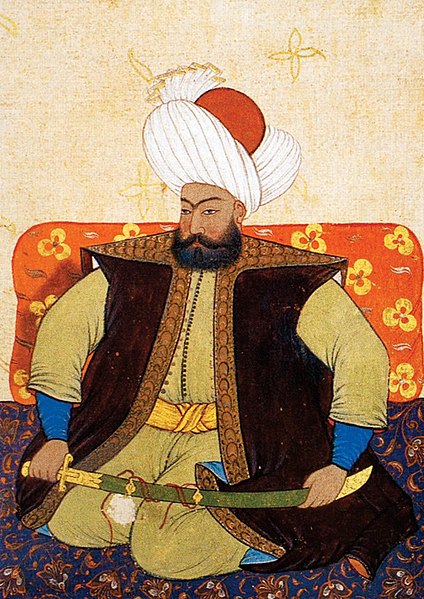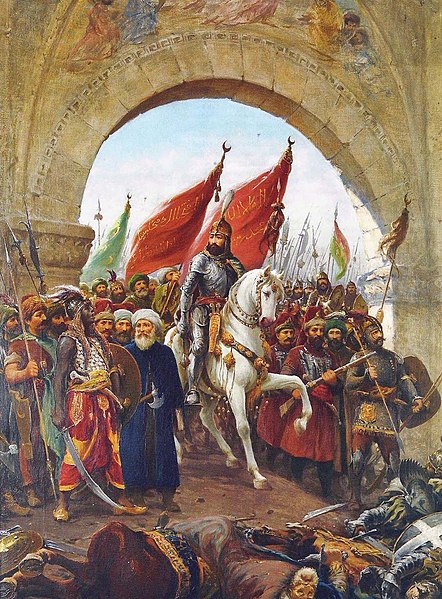Classical Age of the Ottoman Empire
The Classical Age of the Ottoman Empire concerns the history of the Ottoman Empire from the conquest of Constantinople in 1453 until the second half of the sixteenth century, roughly the end of the reign of Suleiman the Magnificent. During this period a system of patrimonial rule based on the absolute authority of the sultan reached its apex, and the empire developed the institutional foundations which it would maintain, in modified form, for several centuries. The territory of the Ottoman Empire greatly expanded, and led to what some historians have called the Pax Ottomana. The process of centralization undergone by the empire prior to 1453 was brought to completion in the reign of Mehmed II.
Miniature of Mehmed II
Sword of Mehmed II
Siege of Belgrade (in Hungarian: Nándorfehérvár) 1456. Hünername 1584
First Siege of Vienna in 1529
The Ottoman Empire, historically and colloquially known as the Turkish Empire, was an imperial realm that spanned much of Southeast Europe, West Asia, and North Africa from the 14th to early 20th centuries; it also controlled parts of southeastern Central Europe between the early 16th and early 18th centuries.
Ottoman miniature of Osman I by Yahya Bustanzâde (18th Century)
The Battle of Nicopolis in 1396, as depicted in an Ottoman miniature from 1523
Sultan Mehmed the Conqueror's entry into Constantinople; painting by Fausto Zonaro (1854–1929)
Ottoman miniature of the Battle of Mohács in 1526








